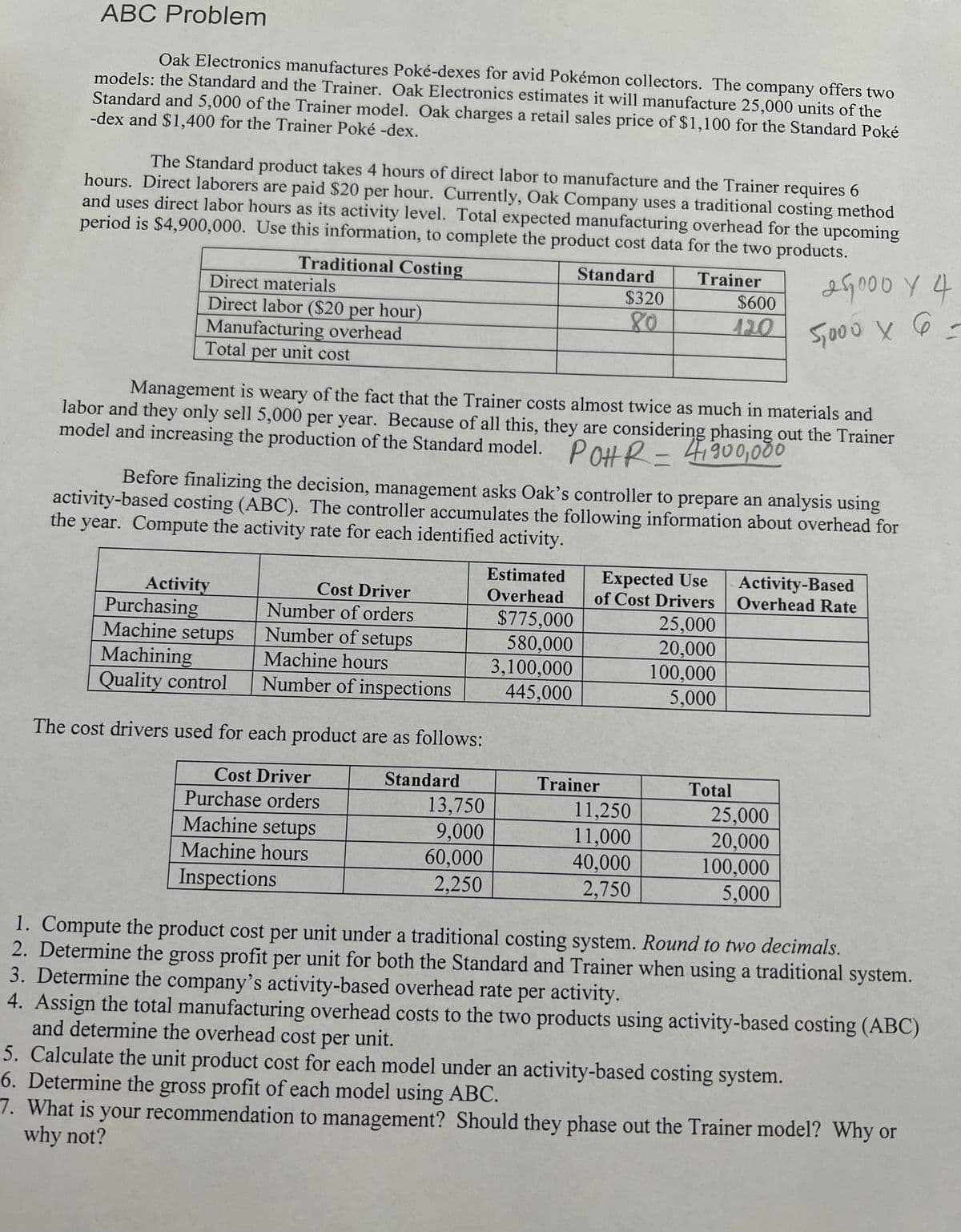Oak Electronics manufactures Poké-dexes for avid Pokémon collectors. The company offers two models: the Standard and the Trainer. Oak Electronics estimates it will manufacture 25,000 units of the Standard and 5,000 of the Trainer model. Oak charges a retail sales price of $1,100 for the Standard Poké -dex and $1,400 for the Trainer Poké -dex. . The Standard product takes 4 hours of direct labor to manufacture and the Trainer requires 6 hours. Direct laborers are paid $20 per hour. Currently, Oak Company uses a traditional costing method and uses direct labor hours as its activity level. Total expected manufacturing overhead for the upcoming period is $4,900,000. Use this information, to complete the product cost data for the two products. Traditional Costing Trainer Standard $320 80 Direct materials Direct labor ($20 per hour) Manufacturing overhead Total per unit cost Management is weary of the fact that the Trainer costs almost twice as much in materials and labor and they only sell 5,000 per year. Because of all this, they are considering phasing out the Trainer model and increasing the production of the Standard model. POHR=4,900,000 Activity Purchasing Machine setups Machining Quality control Before finalizing the decision, management asks Oak's controller to prepare an analysis using activity-based costing (ABC). The controller accumulates the following information about overhead for the year. Compute the activity rate for each identified activity. Cost Driver Number of orders Number of setups Machine hours Number of inspections The cost drivers used for each product are as follows: Cost Driver Purchase orders Machine setups Machine hours Inspections Standard 13,750 9,000 60,000 2,250 Estimated Overhead $775,000 580,000 3,100,000 445,000 Expected Use of Cost Drivers 25,000 20,000 100,000 5,000 $600 12.0 Trainer 11,250 11,000 40,000 2,750 25000 5,000 X Total Activity-Based Overhead Rate 25,000 20,000 100,000 5,000 1. Compute the product cost per unit under a traditional costing system. Round to two decimals. 2. Determine the gross profit per unit for both the Standard and Trainer when using a traditional system. Determine the company's activity-based overhead rate per activity. - Assign the total manufacturing overhead costs to the two products using activity-based costing (ABC and determine the overhead cost per unit. Calculate the unit product cost for each model under an activity-based costing system. Determine the gross profit of each model using ABC. What is your recommendation to management? Should they phase out the Trainer model? Why or why not?
Process Costing
Process costing is a sort of operation costing which is employed to determine the value of a product at each process or stage of producing process, applicable where goods produced from a series of continuous operations or procedure.
Job Costing
Job costing is adhesive costs of each and every job involved in the production processes. It is an accounting measure. It is a method which determines the cost of specific jobs, which are performed according to the consumer’s specifications. Job costing is possible only in businesses where the production is done as per the customer’s requirement. For example, some customers order to manufacture furniture as per their needs.
ABC Costing
Cost Accounting is a form of managerial accounting that helps the company in assessing the total variable cost so as to compute the cost of production. Cost accounting is generally used by the management so as to ensure better decision-making. In comparison to financial accounting, cost accounting has to follow a set standard ad can be used flexibly by the management as per their needs. The types of Cost Accounting include – Lean Accounting, Standard Costing, Marginal Costing and Activity Based Costing.

Trending now
This is a popular solution!
Step by step
Solved in 9 steps with 2 images









